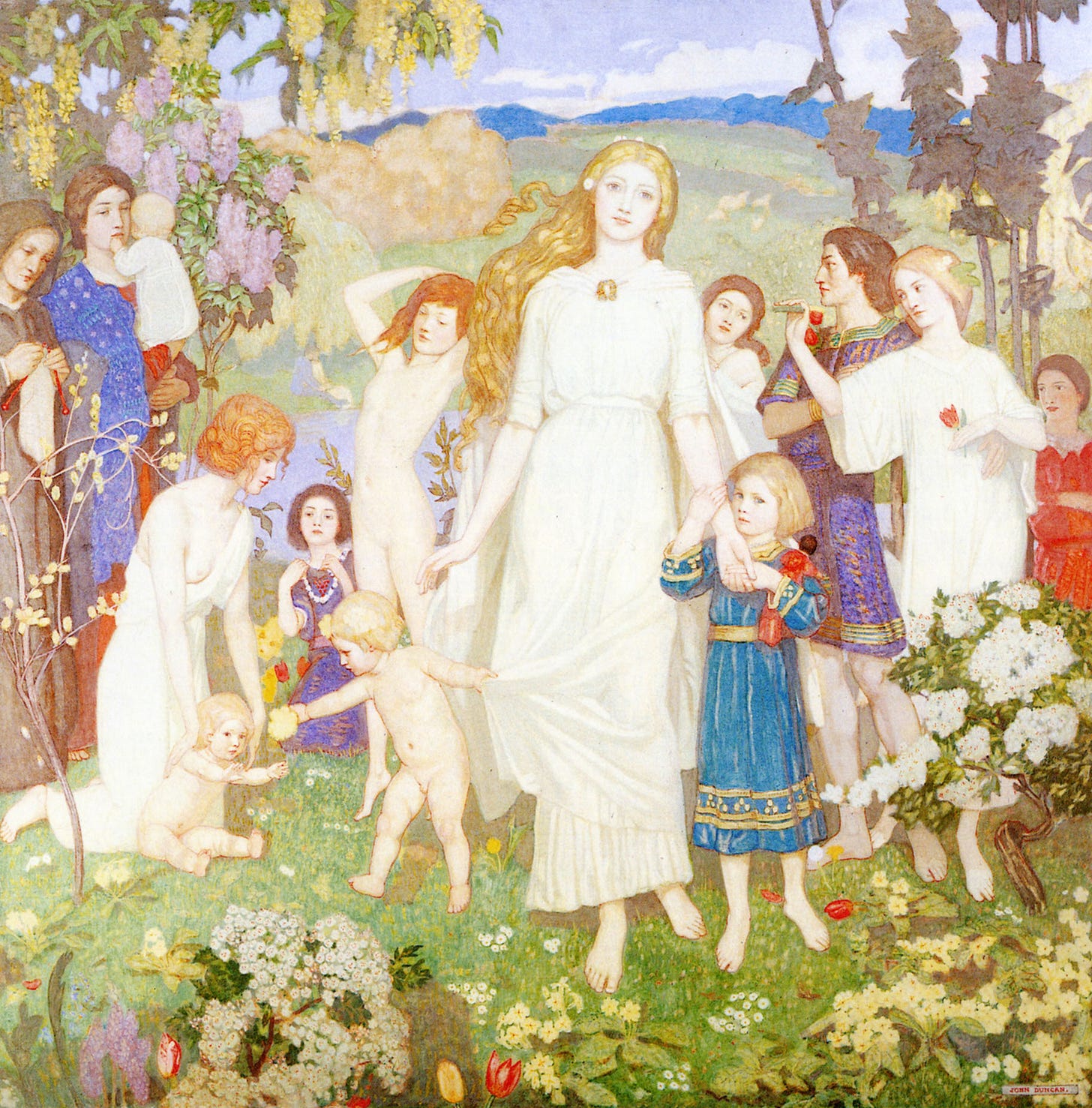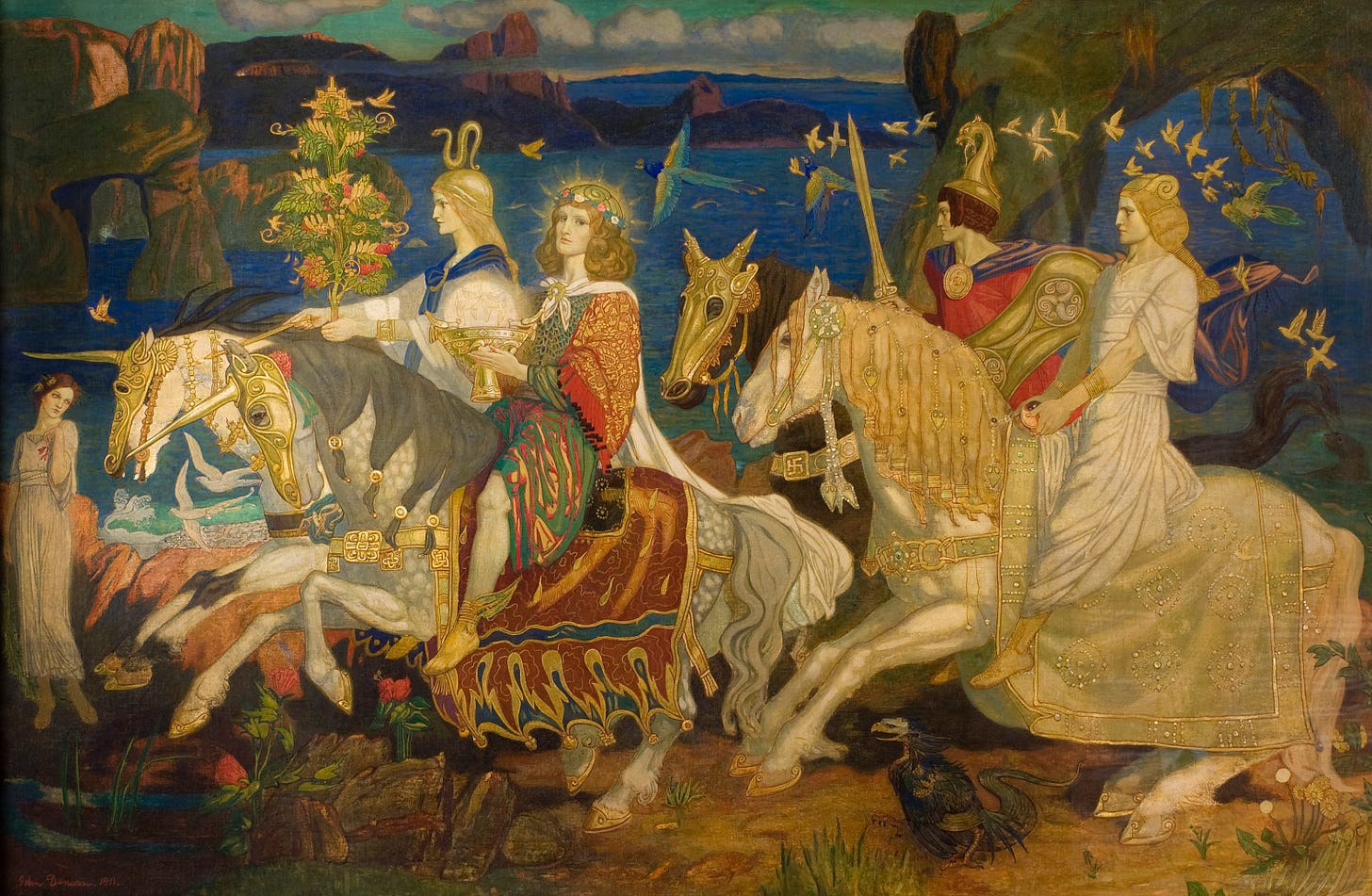This Brigit is a woman of poetry that is Brigit the Goddess worshipped by poets because her protection was very great and well known. This is why she is called a Goddess by poets. Her sisters were Brigit the woman of healing and Brigit the woman of smithcraft, Goddesses; they are three daughters of the Dagda.
—From Sanas Chormaic as translated by Kuno Meyer
Typically celebrated on February 1st and 2nd, Imbolc is, for most witches, a day to honor the Irish goddess Brigid. She’s the patron of artisans and scholars and protector of women, children, and livestock. She is associated with both fire—hearth fire and the fire of the forge—and living water. Her holy day is the midpoint between the Winter Solstice and the Spring Equinox, the moment when we may see the first signs of the seasons of abundance ahead.
Colors often associated with Imbolc are white, red, and green. White is the snow that’s beginning to melt and the color of purification. Red is fire, inspiration, and passion. And green is the tender green of crocuses as they are first emerging.
Some witches list snakes among the animals sacred to Brigid, and this makes sense given her role as a goddess of wisdom, healing, and renewal. In the scant textual traces of Brigid, though, she is celebrated as the owner of a magical boar, a magical wether (a castrated ram), and two magical oxen (castrated bulls). This is to say that the medieval author of Lebor Gabála Érenn—The Book of the Taking of Ireland, or The Book of Invasions—gives Brigid domesticated animals that represented wealth and prestige and also a connection to the Otherworld. As a member of the Tuatha Dé Danann, Brigid is member of a supernatural race of beings, and as a member of the Tuatha Dé Danann she retreats underground when the Tuatha Dé Danann are defeated by the Milesians—the mortal race from whom the Irish are descended.
Examples of how Brigid is venerated today are abundant. Evidence for how she may have been worshipped in pre-Christian Ireland is essentially nonexistent. It’s easy to say that the saint is a Christianized version of the goddess, and that might be true. But it’s also true that textual evidence for the goddess postdates written records describing the saint by decades. From here, it’s impossible to disentangle the goddess from the saint. Indeed, many of the symbols associated with the goddess may well be borrowings from the cult of the saint.
Luckily, for (most) witches, none of this poses a problem.1 We are free to work with the sacred avatars we vibe with and shape our worship as we please.2 Over at Croning, I just published an essay about the goddess Brigid and rape whistles. In this space last year, I wrote about St. Brigid and abortion and explored her love of beer and her status as a queer icon.
Last year I also created a zine called A Postmodern Witch’s Guide to Imbolc. This year, I’m giving paid subscribers the digital edition for free. If you’ve ever thought about becoming a paid subscriber, now is a pretty good time to do it. The zine alone is $7 and for that same $7 you get access the archives and the all the treats therein. And you get the sense of goodness that only comes from supporting independent creators.
Keep reading with a 7-day free trial
Subscribe to Postmodern Witch to keep reading this post and get 7 days of free access to the full post archives.




